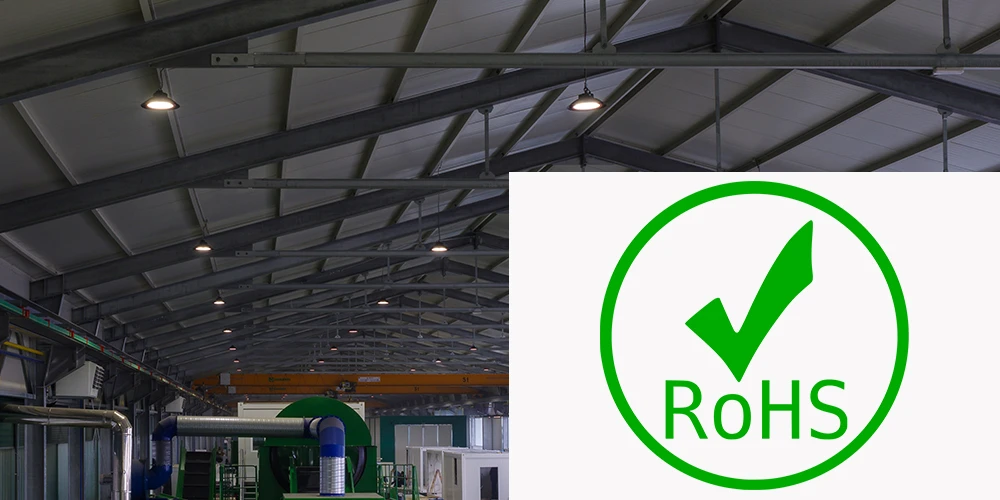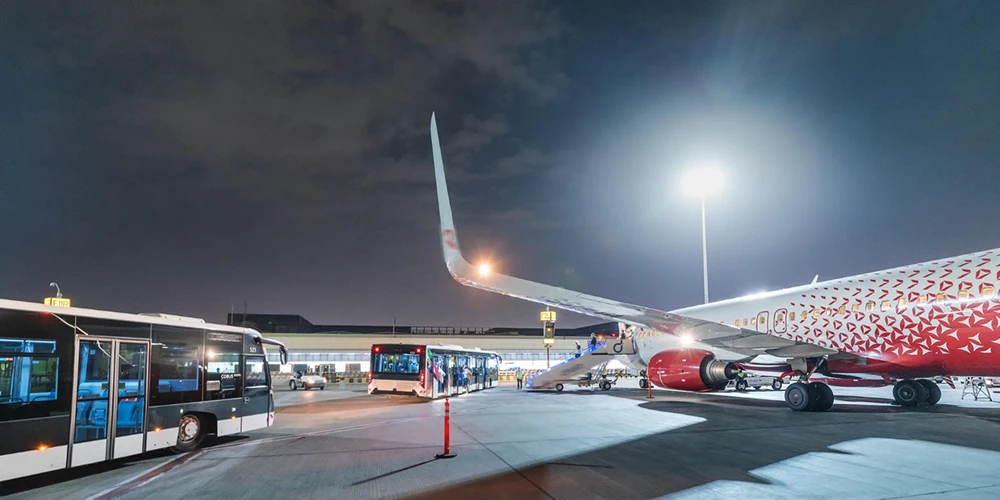Sustainability has become more than just a buzzword in the lighting industry. The treatment and disposal of electrical and electronic waste can release harmful substances and cause environmental and health problems. The RoHS directive restricts the use of hazardous substances in electrical and electronic equipment that are harmful to the environment and public health. It has been a driving force behind the phasing out of traditional light sources containing mercury, lead, and other hazardous materials. This regulation has propelled the industry towards more eco-friendly alternatives, particularly LED technology, which offers both energy efficiency and longer lifespans. As a result, many facilities will need to upgrade their existing lighting installations.
In this blog, we’ll explore why the RoHS directive matters so much for the lighting industry.
What is the RoHS directive?
The RoHS directive, which stands for “Restriction of Hazardous Substances”, is a set of regulations established by the European Union (EU) to control the use of specific hazardous materials in electrical and electronic equipment (EEE). It was established in 2002 and had a compliance deadline of July 1, 2006. The primary goal of RoHS is to reduce the environmental and health impacts associated with the use and disposal of these substances.
RoHS 2 came into effect in July 2011, replacing RoHS 1. RoHS 2 broadened the scope to include all electrical and electronic equipment, cables, and spare parts. This encompasses a wider range of products compared to the original directive. In 2015, RoHS 3 was established to amend the RoHS 2 directive. RoHS 3 added four additional substances to the list of restricted materials. These are specific phthalates used to soften plastics.
WEEE (Waste Electrical and Electronic Equipment) refers to waste from electrical and electronic equipment. The WEEE directive (2012/19/EU) is a European Community Directive that sets collection, recycling, and recovery targets for all types of electrical goods.
Both RoHS and WEEE apply to electrical and electronic equipment (EEE). The RoHS directive regulates the hazardous materials used in the manufacture of EEE, while the WEEE directive explains how to use, operate, and recycle EEE or its components. That is to say, RoHS compliance also follows WEEE compliance.

What are restricted substances for RoHS?
Here are six substances that are banned under RoHS (2002/95/EC):
- Lead (Pb)
- Mercury (Hg)
- Cadmium (Cd)
- Hexavalent Chromium (CrVI)
- Polybrominated Biphenyls (PBB)
- Polybrominated Diphenyl Ethers (PBDE)
Later Additions (RoHS 3):
- Bis(2-Ethylhexyl) phthalate (DEHP)
- Benzyl butyl phthalate (BBP)
- Dibutyl phthalate (DBP)
- Diisobutyl phthalate (DIBP)
Restricted materials may be found in sensors, switches, connectors, metal coatings, plastic covers, etc. There are maximum allowable concentrations for each substance in RoHS-compliant products, typically at 0.1% by weight (1000 ppm), with some exemptions.
Why does RoHS matter for the lighting industry?
At its core, RoHS mandates the restriction of hazardous substances in electrical and electronic equipment, compelling lighting manufacturers to innovate toward safer, more sustainable products. RoHS compliance also affects distributors and sellers, all the way down the chain to the end user.
For lighting manufacturers, compliance with RoHS is essential for selling products in key markets like the European Union and the UK. These regulations create a level playing field, ensuring a focus on environmentally responsible practices throughout the industry.
RoHS compliance also plays a key role in obtaining the CE marking, a symbol recognized across the European Union. This signifies that lighting products meet high safety, health, and environmental standards, giving consumers peace of mind.
RoHS has led to the phase-out of certain lighting products that don't meet its standards. For instance, the ban on Compact Fluorescent Lamps (CFLs), coming into effect in February 2024, pushes the industry toward more sustainable RoHS-compliant alternatives. This has led to the rise of LED technology, a highly efficient and RoHS-compliant alternative to traditional lighting. LEDs offer significant environmental benefits while delivering superior lighting performance. Many facilities, including homes, industrial applications, commercial spaces, and offices, need to be retrofitted with LED lighting. This offers a huge opportunity for the growth and development of the LED lighting market.
Benefits of RoHS-compliant LED lighting
- Environmental Protection: Prior to RoHS, many lighting products contained harmful substances like mercury, a major environmental threat when disposed of improperly. RoHS restricts these substances, preventing toxic materials from entering landfills and contaminating our environment. Phasing out lamps that contain mercury will save 1.8 metric tonnes of toxic mercury between 2023 and 2035. This ensures a safer future for our planet.
- Health and Safety: RoHS isn't just good for the environment; it protects human health as well. By limiting hazardous materials in lighting products, exposure risks are minimized for both consumers who handle these products and workers involved in their manufacture.
- Cost saving: Economically, RoHS-compliant LED lights offer cost savings in multiple ways. Their longer lifespan compared to traditional incandescent or fluorescent bulbs means lower replacement costs and less maintenance. The energy efficiency of LEDs translates to lower electricity bills, making them a cost-effective lighting solution over time.
As a global supplier, we take the environment protection and sustainability very seriously. Our products comply with the Restriction of the Use of Certain Hazardous Substances (RoHS) in Electrical and Electronic Equipment. Make the switch to our products and experience high-performance and sustainable lighting solutions.













